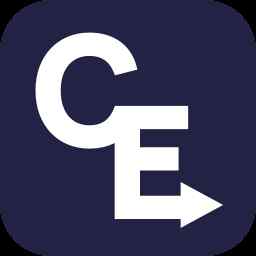A Beginner’s Guide to Illustration
How Do You Price Yourself As An Illustrator?

Like many professions in the creative field, illustrators can work either as a full-time employee for a company or as a freelance artist who sets their own pricing and value on the work they do. It can be challenging to negotiate salaries or set rates so we’ve put together a how-to to help you get started on setting your prices as an illustrator. Whatever realm you find yourself working in, it is important that you are paid accordingly for your services and don’t undersell your illustrations in the process. For the freelance work you do, you’ll want to make sure that you set a competitive wage, one that is on par with the industry. Let’s get started on setting your price for illustrations:
Average Salary
According to the BLS, the median annual wage for an illustrator in the US is $49,120 per year. The same as essentially every other job, this salary will fluctuate depending on the size of the company you work for, the scope of the projects, as well as the type of illustration work you specialize in. For example, it is common for a book illustrator to be paid on the higher end based on demand. An entry level illustrator will also be paid less than one that is highly experienced or well established in their career. For illustrators who fall into this category, they can make a salary of $80,000 or beyond.
Freelance Advice: Work Backwards
There are two types of payment types you can receive as a freelance illustrator — either a flat rate for the project or an hourly rate. We’ll get into both of those later on, but to start it is important to decide on your base rate of how much you want to charge for your illustrations. A good way to do this is to work backwards from how much you expect to make in salaries for a full year and then calculate how much you would have to charge for your work on a per hour or per week basis. On average there are 261 working days a year — to account for holidays you will be knocked down to 250. You also may decide you want to account for a few other days off in the year or sick days, that will be up to your own discretion. From there you should create a salary amount you are comfortable with for the year and divide by your number of days, followed by hours. This base number is the perfect starting point as you move into deciding whether your illustration freelance work will be based on a flat rate or hourly rate.
Flat Rate
With flat rate pricing, you will be basing your illustrations off of the deliverable as opposed to the amount of time you will be spending. The flat rate pricing for your illustrations is the most common when it comes to freelance illustration. After you know how much you value your illustrations per hour, you will then need to estimate the amount of time it will take for the project and then develop the flat rate. As you gain more experience and develop a better understanding of how long illustrations normally take you to complete, you will have an easier time accurately estimating hour many hours an project will take to complete.
Hourly Rate
As outlined above, working backwards from what you want your average salary to be will help you hone in on your hourly rate. For your reference, the average hourly rate for hiring an illustrator is $200 yet we see the actual range differ greatly. We can see ranges between $25 to $100 per hour but can be higher depending on experience and the illustrator’s the specialization. When you look at the nationwide range across the U.S. that covers larger projects, specialty designs, or factors in the reputations of different artists, you can see these numbers range from $90 to $465. Keep in mind that your hourly rate may go up or down depending on the project and will also be affected as you move through your career.
By now we’ve touched on everything from what an illustrator is, and what an illustrator does, to how to price your illustration work and steps to get started in the industry.
What does an illustrator do?
The illustrator will use various techniques to create effects, like the simplicity of black and white, the richness of color, or the use of light and shadows.

An illustrator is an artist who creates two-dimensional images for various companies and industries, such as fashion design, children's books, magazines, medical manuals, web sites, technical designs, and advertising.
What does an Illustrator do?
Illustration is an amazing communication tool. Words can explain something to you, but an illustration can show you something — "a picture is worth a thousand words".
Illustrations can convey a feeling, a meaning, or an essence sometimes more effectively than a wall of text can. Illustrations can simplify a complicated idea, compliment the words or message being delivered to the user, and sometimes stand alone without any needed explanation.
An illustrator is usually hired or commissioned to produce a visual representation within the context of an associated text or idea. There are various stages in an illustrator's work flow that usually include:
Discussing the client’s illustration and design needs
Negotiating price and deadlines
Developing a sample to go over with the client
Producing the illustrations by the deadline
An illustrator will usually begin by sketching out a draft of the images they want to make. Once they have an idea of the quantity and the general outline of the whole project, they begin working on drawing each illustration. Illustrators can work from pencil and paper, or digitally on the computer. They can choose the medium that works best for their style and their client’s needs. Every illustrator has excellent drawing skills so that they can produce all kinds of images and designs.
It is important for the illustrator to listen and understand the client’s needs, and be able to exchange ideas and rework multiple concepts until both parties come to a final interpretation and illustration. Natural talent, education, and continuous practice is necessary in order to become successful as an illustrator.
Illustration has become a very competitive career which means that most illustrators develop a very distinct design aesthetic so that their work stands out. While an illustrator’s work is incredibly creative, it sometimes means that they have to keep working even when they are not feeling particularly inspired.
There are many types of illustrators across a range of industries:
Editorial Illustrator
A well-crafted illustration can immediately bring forth the essence of an idea, eliminating the need for detailed explanations. Editorial illustrators create images that partner with written articles in newspapers, magazines, and journals. Editorial illustrations bring stories to life, bring out the main points in an article, and get readers to become involved with sometimes hard-to-understand written content (for example, political, scientific, or medical illustrations can make things easier to envisage).
Art directors rely heavily on editorial illustrators to provide them with attention-getting images so as to visually deliver information and convey ideas — they work closely together as a team to create the best possible illustration(s) to either tell a story or to illuminate a concept. There are hundreds of magazines, journals, or newspapers out there to suit just about every style of illustration, from traditional illustrations to photo illustrations, collages, caricatures, maps, or simple beautiful drawings. For illustrators who can deliver artistic skills along with conceptual ideas, opportunities abound.
Product Illustrator A product illustrator consults and works with private clients or with advertising agencies to create a finished drawing or painting of a product or a product feature. They create illustrations for items like brochures, commercial packaging, online products, and various forms of advertisement. Product illustrators see their illustrations as a way to create a whole unique identity for a product and as an important part of the story that needs to be told in order for the product to be successful.
A user's experience of a product can be greatly improved by having new concepts or complicated features explained visually. Illustrations can add some life and whimsy to what can often become a very mechanical and sterile process of doing things (such as managing finances, making appointments, or shopping for a gift). When a feature is being bypassed, misused, or underused, an illustration can help the user focus on it. By matching an illustration to a specific feature, it can add information, context, and clarity, or can lead the user to the next step.
Custom illustrations can help users get a feel of the purpose of the product, a deeper understanding of the brand, and can show what the product or a specific feature does. Users might become confused, distracted, or frustrated with a product if there is too much text or the text is not being read and understood. An illustration here and there can help breathe some life and insight into an otherwise overwhelming wall of text.
Children’s Book Illustrator
Children’s book illustrators create the illustrations that appear alongside the written text in a children's book for both fiction and non-fiction books (a children’s book is typically classified for kids aged 12 years old and younger). Through artwork, the illustrator can help to bring a story or subject to life and makes a book more colorful, interesting, and thought-provoking.
Although computers are the most common way illustrators get their work done, some artists would still rather use traditional methods like painting or drawing to create their illustrations. These paintings or drawings can then be digitally scanned before being published.
Children’s book illustrators can either work on a freelance basis or for a publishing company. Either way, they will most likely be working with publishers from the planning stages of the book to the final execution of the book. In this type of setup, the illustrator and the author of the book rarely meet.
The procedure begins by the publisher giving the illustrator the completed storyline and letting the illustrator suggest various areas where illustrations would make the story more interesting and interactive. After reaching an agreement, a storyboard layout is made by the publisher to show the various pages with the accompanying illustrations. The children's book illustrator will then create their preliminary sketches, get them approved by the publisher, then move on to complete and finalize their work.
Note: Self-publishing authors will reach out and work directly with a children's book illustrator instead of going through a publisher.
Fashion Illustrator
Fashion illustration is the intersection between drawing, painting, computers, and fashion, and includes almost any illustration whose focus is on fashion, accessories, and related media. Illustration work is usually commissioned for use in fashion magazines and blogs for an editorial feature, for design house sales, or for brand advertising purposes. Fashion illustrations are also used by fashion stylists and fashion buyers in order to make buying decisions for their clients. These drawings must represent the clothing/makeup/accessory well and be visually appealing.
Fashion illustrators might use realistic representations or more abstract sketches, and it is usually the call of the designer as to what artistic medium is to be used (illustrations can be created by pencil, charcoal, pastels, paints, or through a computer program like Photoshop). Some fashion illustrators are hired full-time, however, most operate as independent freelancers who work on short-term contracts.
Storyboard Illustrator/Artist
Storyboard illustrators draw storyboards (by hand or by computer) for films, music videos, animated features, television commercials, television pilots, video games, and ad campaigns. Years ago, animation used storyboard panels drawn on paper. However, in these modern times of digital animation, most storyboard illustrators use software like Photoshop or Storyboard Pro. Using software makes it much easier to fix mistakes or make any last minute changes.
A storyboard illustrator begins creating the storyboard after a concept or script has been written. They will take the art director, filmmaker, producer, or advertiser's rough ideas and develop finished drawings for presentation purposes. Often, especially in TV animation, the storyboard illustrator is also the writer of the episode.
The storyboard that the illustrator presents is a representation of a panel-by-panel 'action' series of scenes, allowing the project to be evaluated before starting production. The illustrator will also include character poses, facial expressions, and backgrounds. These storyboards are meant to give visual ideas of what the finished product will look like after production. The boards can also be used as direction during production. As the project progresses, scenes can easily be edited or eliminated altogether.
Technical Illustrator
A technical illustrator designs and creates visual representations and realistic renderings to communicate information of a technical nature. Their work may consist of creating blueprints, equipment installation graphics, and technical diagrams for use in technical publications and manuals.
A technical illustrator will create concise and accurate technical illustrations by taking information from text or data — this information could be sourced from research content, installation instructions, or service guide diagrams. In order to do this type of work, technical illustrators must have an excellent understanding of their employer's products and goals, and be familiar with software programs such as AutoCAD, Photoshop, MS Office, Adobe Flash Builder, and both Windows and Macintosh systems.
Medical Illustrator
A medical illustrator creates realistic renderings to be used in the medical field. These illustrations are used in textbooks, charts, magazines, and advertising — all associated with the medical profession. In the past, most medical illustrators worked with physicians in medical centres, producing illustrations for traditional medical textbooks, scientific journals, instructional videos, films, presentations, and exhibits. However, with the ever-increasing advances in imaging and computer graphics, present-day medical illustrators have many new opportunities.
Some medical illustrators specialize by subject matter, such as surgery, ophthalmology, or veterinary medicine. Others specialize in computer animation or in making three-dimensional models. Others target specific markets such as medical publishing or pharmaceutical advertising.
There is now an ever-growing need for medical information aimed at the general public due to the demand for patients to better understand their state of health and their medical options. Computer animations can make even the smallest sub-cellular processes come alive and be readily available for all to see and understand. Even lawyers can now use medical illustrations to simplify complicated medical information in malpractice and personal injury cases.
What does an Illustrator do? (with pictures)
An illustrator creates art in the form of drawings or paintings. She uses her talents and tools to produce images that are two-dimensional renderings of people, animals, objects and nature. The art may be black and white or have few or many colors in it. Various effects are created by the artist through her use of color, light and shadows. Her talents can be used in such areas as children's books, medical illustrating, fashion design and technical design industries, among others.

People who work in this art form are important to many mediums and industries. An illustrator can contribute to an advertising campaign by drawing images for packaging, labels and advertising materials. The greeting card and wrapping paper industries also use art to enhance their products. Most magazines and many books rely on the talents of these artists to generate pictures to accompany text or for cover designs.
Many illustrators choose to specialize in one medium or industry. This choice is generally based on particular talents of the artist as well as the needs of the marketplace. For example, if she discovers that she is particularly adept at sketching evolving automobile designs and concepts, she may concentrate her efforts in perfecting skills in technical illustration.
Other popular areas of concentration for this position include scientific, medical and fashion illustration. Scientific illustrators generally have special talents in depicting foliage, animals, earth formations and planets. Those who specialize in medical drawings normally excel in drawing human body organs and schematics of surgical procedures. Fashion illustrators typically demonstrate distinct talents in sketching clothing and accessories.
If an artist chooses to remain a freelancer, she normally approaches each assignment in an organized and methodical manner. She traditionally reviews the past sketches or drawings used by the customer to determine their style preference. This evaluation ordinarily includes determining preferences for color or black and white and whether realism or idealism is preferred in the depictions. Other points of consideration are the quantity of sketches desired and the time frame in which they must be produced.
In addition to having a portfolio that reflects her full range of talents, an illustrator is normally expected to be open to new methods and challenges. Her success often is highly dependent upon her ability to listen and understand her clients’ needs and present them with her interpretation of them. The artistic process is typically a long process of exchanging ideas. Being able to comprehend and rework multiple concepts is helpful to the individual's career.
Illustrators, like many other artistic professionals, tend to heavily rely upon natural talent to be successful. Education and training related to talent commonly improve inherent artistic aptitude, so college and art school classes can be beneficial. A solid and diversified portfolio is customarily considered a major asset.







